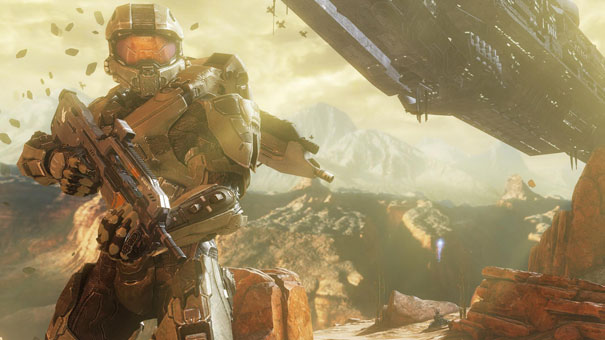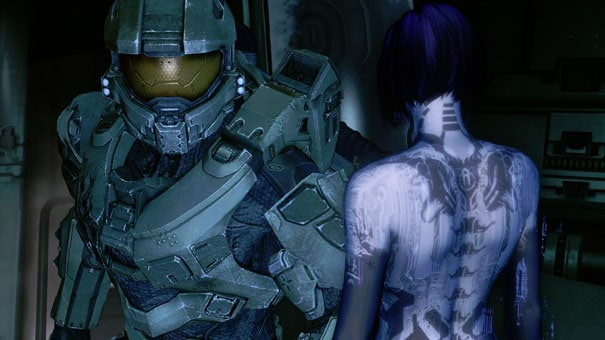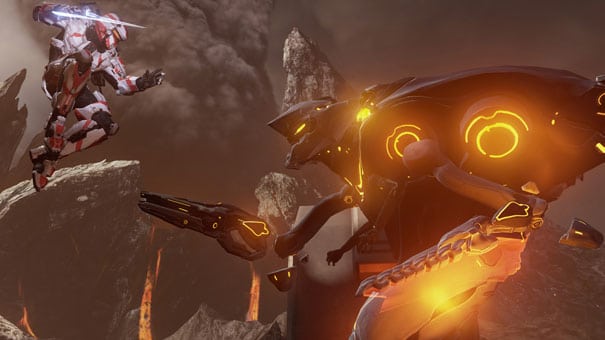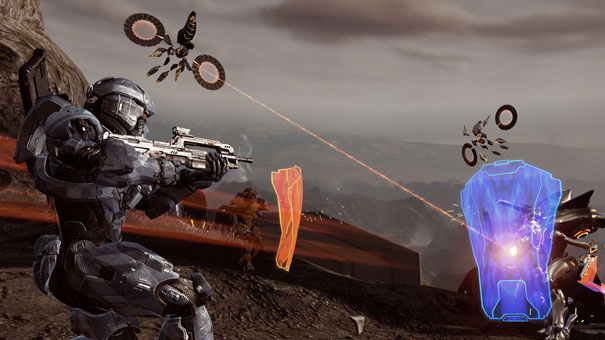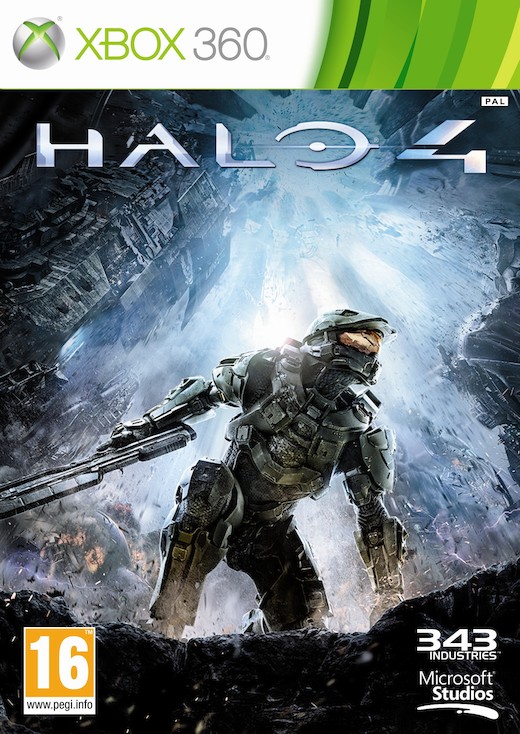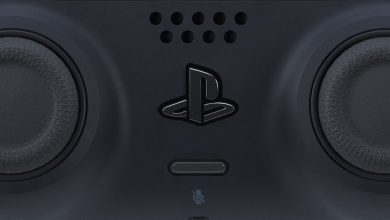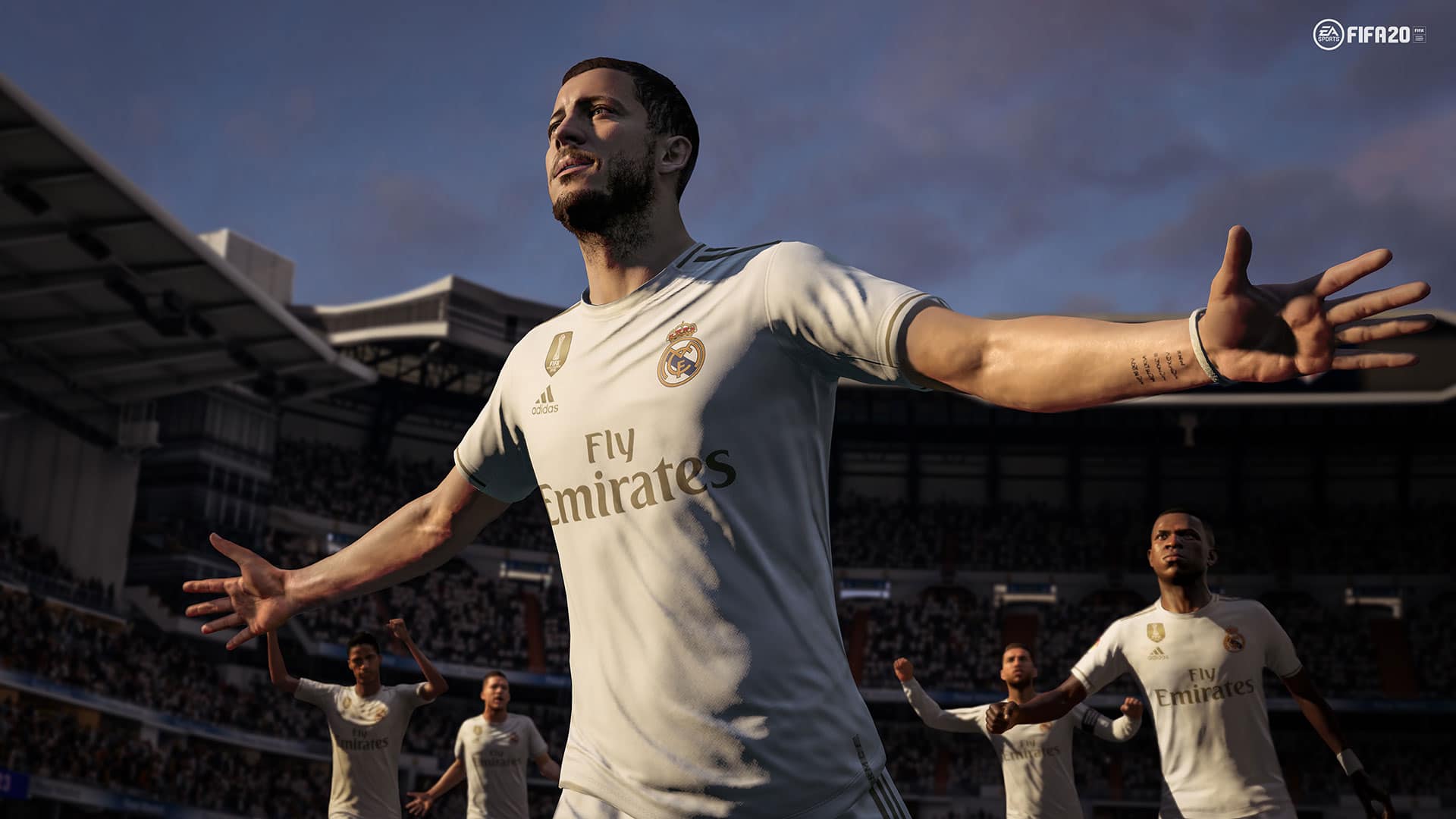One of the more bizarre things about Halo has always been its story telling. Take Halo 4 for example. For people immersed in the lore, the story is fascinating and full of details and throwbacks to other mediums into which the franchise has expanded. For 90% of its audience though, it’s one gigantic “Huh? What?” followed by another. It might be one of the most popular franchises in the world but it seems to think that it’s an exclusive club where only the devoted are allowed.
And I imagine it must be infuriating for a new comer to the series to play Halo 4 and be completely lost in its plot. New species and characters are introduced and the game just keeps moving on without any explanation as if you should already know their significance. It’s pure fan service in a way but it also feels very exclusionary to (what I imagine is) a large percentage of its audience. The presentation is top notch (back up by some of the finest CGI I have ever seen in any video game), but you will be left digging for details around different sources to put the pieces together.
Thankfully the presentation aspect also carries over into the core game which looks fantastic visually. Part of that is because of the tech the game engine uses. But more important than that is the absolutely fantastic art design, that sets a new standard for the series. Halo has always had some amazing Skyboxes, and Halo 4 takes it to a whole new level with some absolutely jawdropping vistas. It also ditches the grainy filter of Reach in favor of the usual colorful look of the series. The overall result is a beautiful looking game.
Those visuals do come at a cost though. There is nothing here like the large sprawling levels or huge firefights from Halo 3. Instead it’s more like Reach, where small sections open up into larger sections of combat. It’s also a little bit shorter than the usual Halo game. Normal difficulty took me about 7 hours, although I did rush through some sections and I am fairly good at the game. On the plus side, there aren’t too many filler sections designed to pad out gameplay length like Reach. And there is enough variety to keep things interesting.
Part of that variety comes from the new enemy types. Thrown into the mix with the Covenant are the Prometheans. Their AI behavior is different from the Covenant so you have to come up with fresh tactics to take them on. And without getting too spoilerific, there is some interesting mix and match of enemies to fight against in the second half of the game. The downside to the Prometheans is that their weapons design doesn’t really offer anything new or interesting. But all in all, they are a solid addition to the list of things you can murder on your grand space adventure.
Music and sound design is also a step above Reach. Martin O’Donnel’s stellar work with the series so far made it almost impossible to imagine someone else stepping in and doing a better job, but Neil Davidge does an exceptional job with the soundtrack. It’s not just that the music sounds great, it also fits the mood and the setting of the game well. Weapon and vehicle sounds have also been beefed up considerably. Most of them (with the odd exception here and there) sound better than before.
Outside of the campaign, Spartan Ops replaces the traditional Firefight mode. Instead of a horde like setting where you survive wave after wave of enemies, Spartan ops plays more like a Single player story based campaign. The sandbox elements on display here are actually stronger than in the main campaign. Part of that is because it’s designed for co op, unlike the single player campaign which was designed with a single player in mind (although you can play both with 3 other people). But it’s also because the levels themselves are designed in isolation rather than trying to maintain the flow of a story.
Spartan Ops is ironically also the most problematic area of the game. Firstly dying seems to have little penalty, so there is no need for caution. Again, I imagine this was done to accommodate the fact that you will be playing the game with random people without much team work. But in order to do so, the gameplay loses some of its tenseness. The other major drawback is that you have to be connected to Xbox live in order to launch Spartan ops even if you want to play solo or offline split screen. It won’t kick you out if you lose connection while playing locally, but it also won’t let you start if you have no Internet.
But the biggest crippling flaw of the whole experience is that the Co op netcode is still as flawed as the one from Reach or Halo 3. Playing with friends who are in the same country works fine most of the time, but try matchmaking or playing with someone outside of the country and everyone except the host faces unbearable input delay lag. It was a major complaint with Halo 3, Reach and even ODST and its odd to see 343 hasn’t addressed it.
The Multiplayer has also seen some radical over hauling from Reach. The biggest change is the core movement of the player. And while not trying to make it a hyperbole, I can safely say it’s possibly the best since Halo 2 or even the best in the series. It feels fast without feeling like a twitch shooter. The jump and strafe speeds have also been considerably improved. Instead of feeling like a clunky, heavy soldier from Reach, you feel like a fast, lethal machine zipping around the battlefield. Or to put it more simply, after a long time it finally feels like you are a Spartan.
The other major change is that now you can customize your starting loadout. It’s kind of like Gears of War where you can pick your starting weapons from a list while the power weapons still have to be “earned” on the battlefield. You can also choose your Armor Abilities (very similar to Reach) and perks (lifted pretty much straight up from Call of Duty). It’s a little too early to say if something is overpowered, but for the moment, the perks and AA’s feel like a natural expansion of your playstyle.
Sadly also copied from Call of Duty is the asinine method of having to grind through enough games to unlock the things that you want. It’s completely counter intuitive to what Halo is about and puts anyone new at a disadvantage. Admittedly the frustrations are kept to a minimum as you rank up pretty fast and probably can get your loadout of choice in a matter of hours. But, it still feels like an unneeded barrier between the player and the game just for the sake of copying things from the market leader.
There are some other minor birthing pains of playlists and item spawns on the map (Gauss Hog? Really 343?) like all Halo games of the past, but nothing that is game breaking or too infuriating. Truth is it’s impossible to make conclusive judgments on any multiplayer game without the benefit of having spent a significant amount of time with it but there is undeniably immense potential here. If handled right, this could be a return to form after the incredibly poor showing of Reach.
Conclusion:
At the end of the day, all sequels face the same criticisms. You can change too much or not enough, so you are damned if you do and you are damned if you don’t. And Halo 4 can be guilty of both of those things at times. But as redundant as it may sound, Halo 4 is still a Halo game at its core. If Halo was a color this would be a deep, rich shade of it. Make of that what you will.
